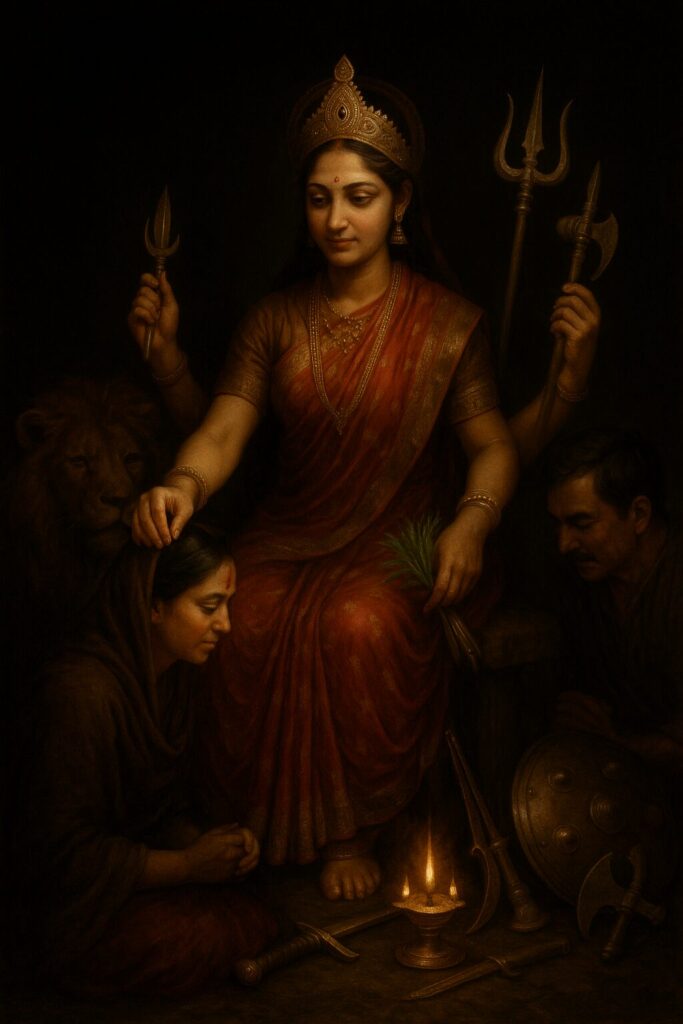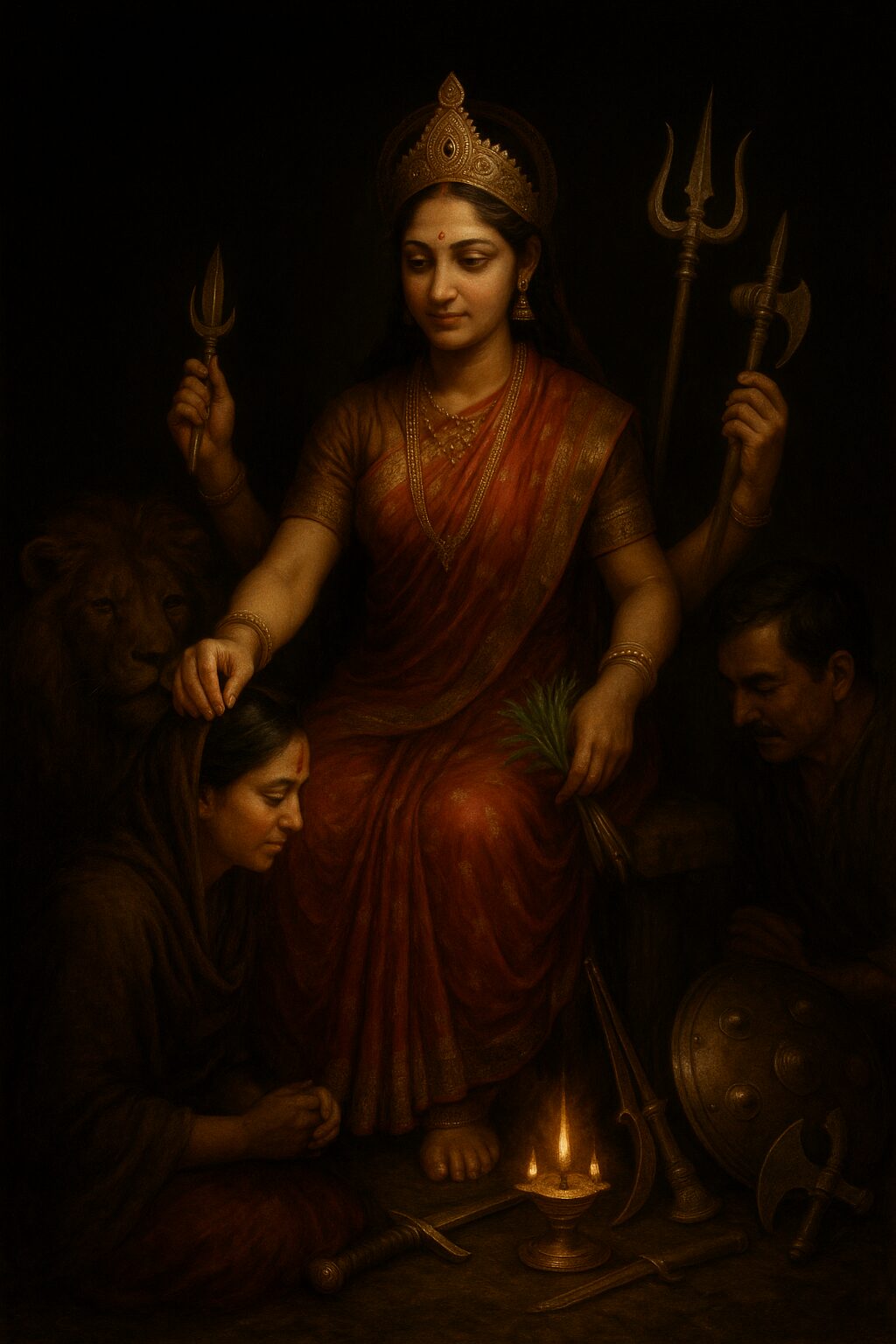Date: Thursday, 2 October 2025 — Dashami Tithi, Śukla Pakṣa of Āśvina

The Cosmic Hour
Bijaya Dashami, the tenth day of Navarātri and the culmination of Dashain, is the hour of descent. The battle is over, Navami has established sovereignty, and now the victory flows outward into the world. In Nepal, families travel across distances to receive tika and jamara, blessings and barley shoots pressed on the forehead as living sacrament. The day is not merely ritual; it is transmission — the current of Durga’s triumph passing through family lines, communities, and the land itself.
Mythos and Meaning
In the Devī Māhātmya, Dashami is the aftermath of the Goddess’s slaying of Mahishasura. The earth is purified, the gods restored, the cosmic balance renewed. In cultural practice, this myth becomes domestic: elders place red tika and barley shoots upon the younger, affirming victory, continuity, and blessing. It is the moment where the cosmic becomes intimate, where the epic battle translates into the simple gesture of a hand on the forehead.
Panchāṅga Ephemeris (2 October 2025)
- Tithi: Śukla Dashami (from 7:26 PM Oct 1 – 9:03 PM Oct 2) — the tenth ascending lunar day, symbolic of completion and triumph.
- Vāra: Thursday (Guruvāra) — day of Jupiter, guru, wisdom, expansive blessing.
- Nakṣatra: Uttarāṣāḍhā (throughout Dashami) — “the Later Victory,” perfectly matching the day’s meaning. Symbol: elephant’s tusk, endurance, universal sovereignty.
- Yoga: Sukarmā — “good action,” supportive of righteous deeds and auspicious beginnings.
- Karaṇa: Taitila → Garaja → Vanija — continuity, stability, exchange; signs of integration into worldly life.
- Sunrise / Sunset: ~6:24 AM / 6:08 PM (Nepal).
The Fourth Way Reading
From the Fourth Way perspective, Dashami is the transmission of Work-memory. The battle of Ashtami was the effort, Navami was the consolidation; Dashami is when the fruit must be shared, handed on.
- Tika and jamara are externalized reminders to “remember yourself” — a physical seal placed on the forehead (the seat of attention), marking that victory must not be forgotten.
- Uttarāṣāḍhā Nakṣatra, the “later victory,” echoes Gurdjieff’s teaching: true victory is not in one effort but in continuity — in carrying the Work into daily, ordinary life.
- Jupiter’s day signifies transmission through teaching, blessing, relationship: the elder handing to the younger, the conscious reminding the mechanical.
In this light, Dashami is a School Day: the moment when inner gains are stabilized by being given away. One remembers oneself more deeply when helping others to remember.
The Integral Yoga Reading
From Integral Yoga, Bijaya Dashami is the spiritualization of relationship and environment.
- The tika is not mere vermilion paste: it is the symbol of psychic victory, placed on the ājñā center. The jamara (barley shoots) are not just ritual greens: they are nature spiritualized, the plant kingdom enlisted into blessing.
- Uttarāṣāḍhā confirms this — victory not for the individual alone but for the collective, the universal. Dashain is never a solitary yoga; it is family, society, nation touched by Shakti.
- The guru-planet Jupiter emphasizes guidance and expansion: wisdom becoming shared atmosphere.
- In the Mother’s words, “All life is yoga.” Dashami is the day when yoga enters kinship, meals, travel, blessing — the most ordinary bonds, seen as divine instruments.
Thus Dashami is the day when the supramental descent is hinted: the Divine not only in temple or meditation, but in forehead, flower, seed, and smile.
Closing Reflection
Bijaya Dashami is the day when the inner victory becomes outer blessing. It teaches that spiritual transformation is incomplete until it descends into gesture, family, environment, nation. In the Fourth Way, it is remembrance sealed by transmission; in Integral Yoga, it is consecration of the collective and the ordinary. In both, it is the truth that the battle is not only to conquer the demon but to illumine the world.

